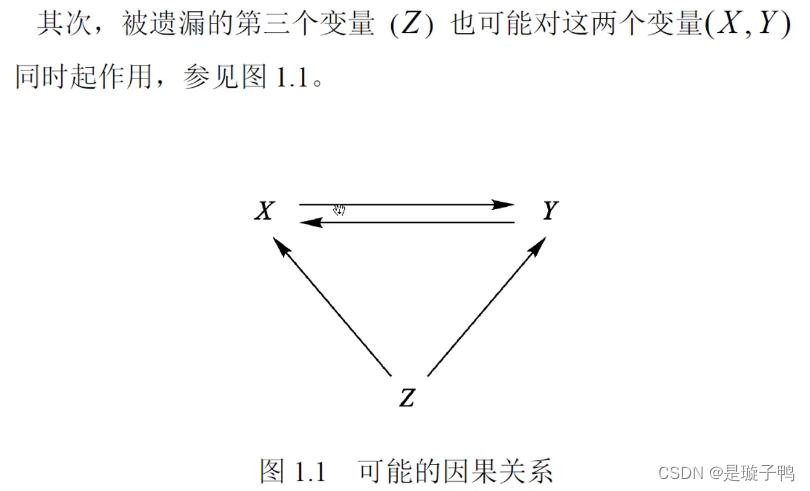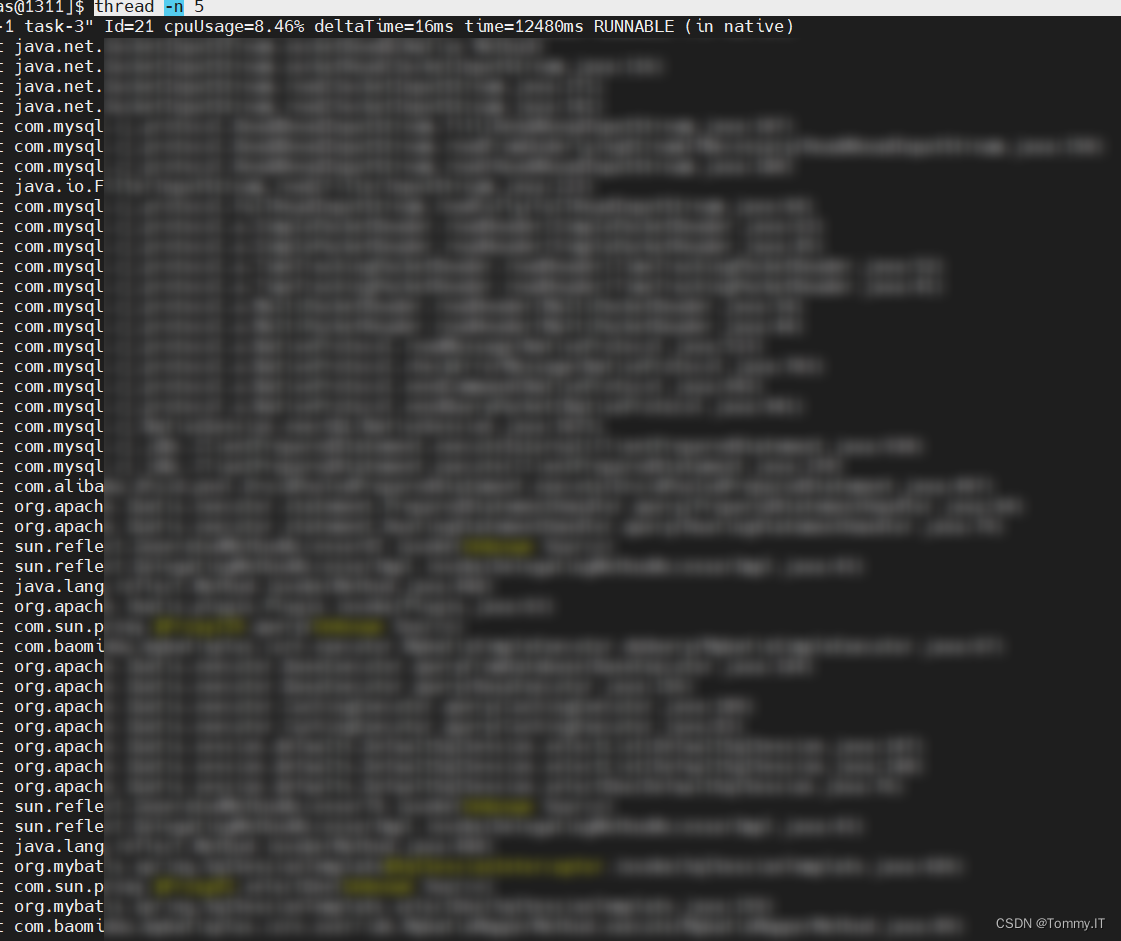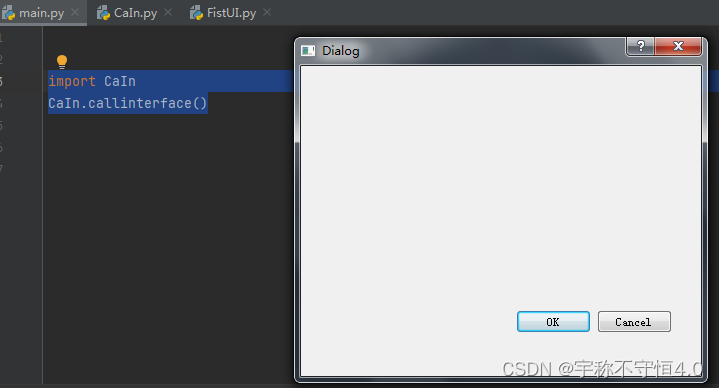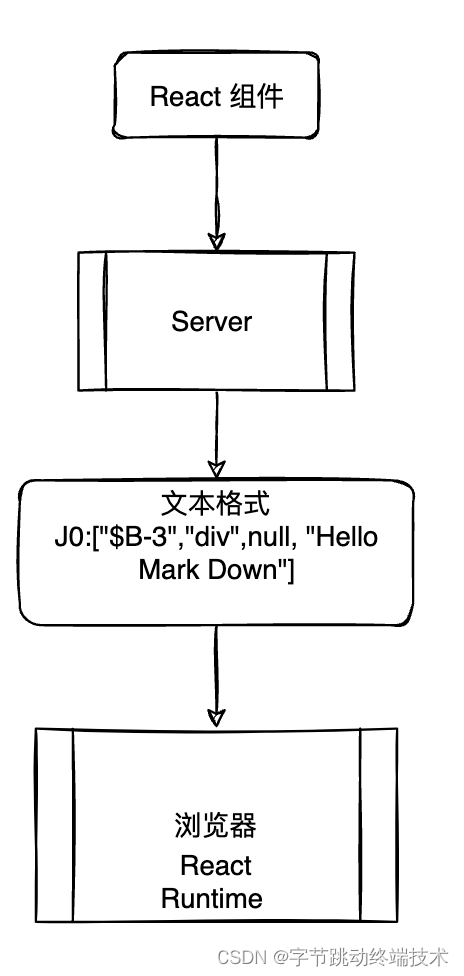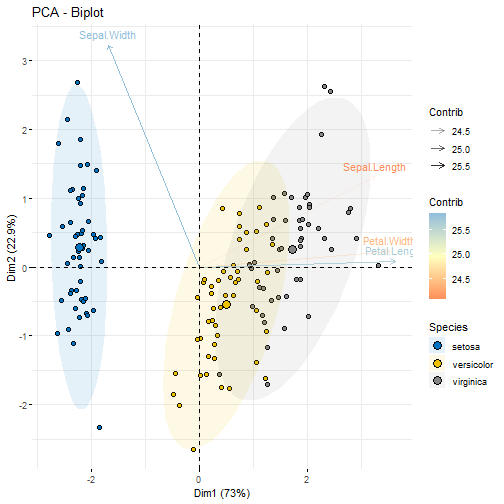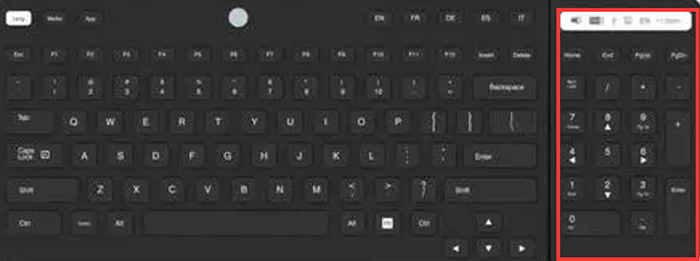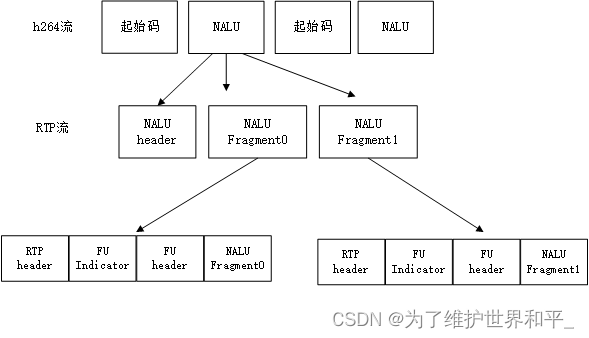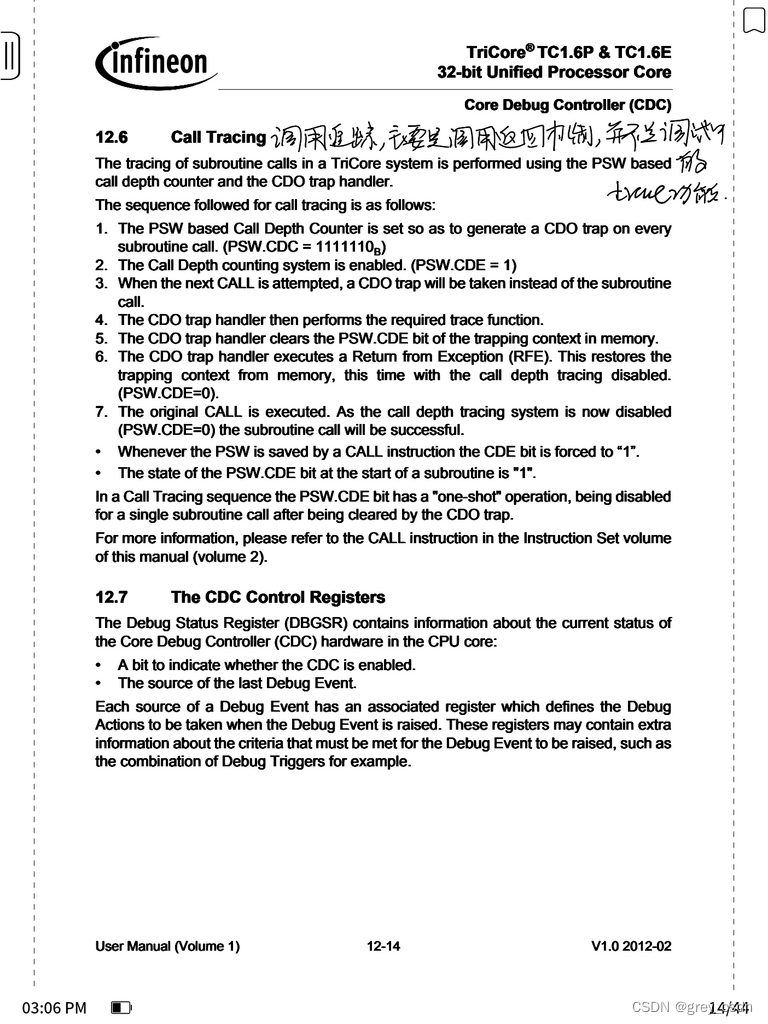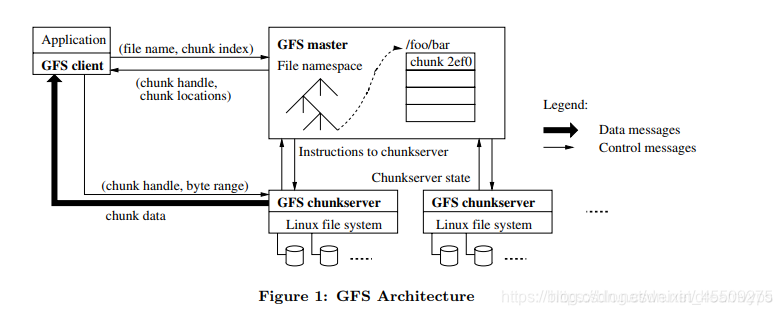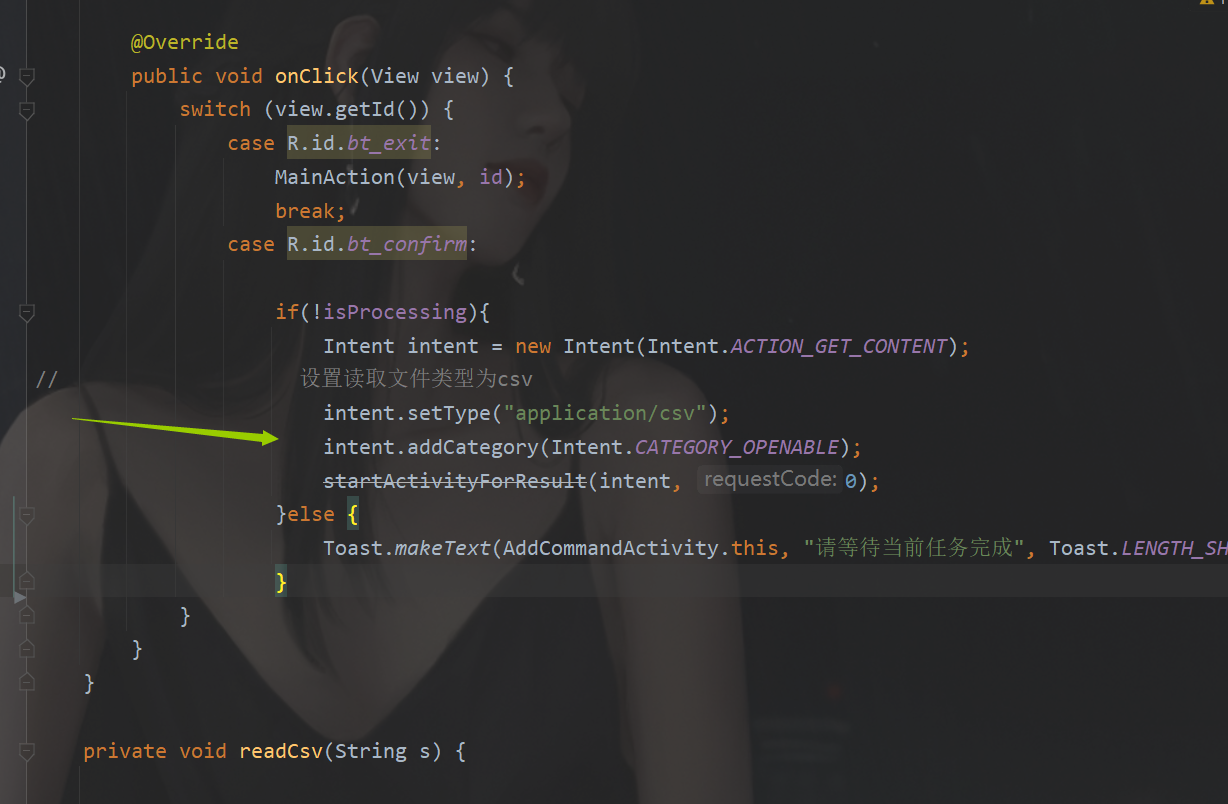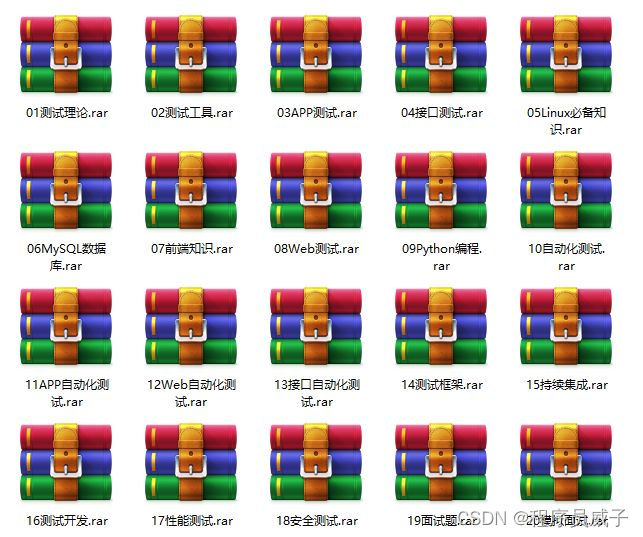
整体架构如上
1.很直观地去看这个中国象棋的界面,数一下它有多少行和多少列.
10行,9列:要注意这里数的是安放象棋的位置,有10行9列
这里我们首先想到的必然是二维数组,每一个行列交叉的点都设置成二维数组a[i][j]这样的格式,以此来确定棋盘上面每一个棋子的位置和走向.
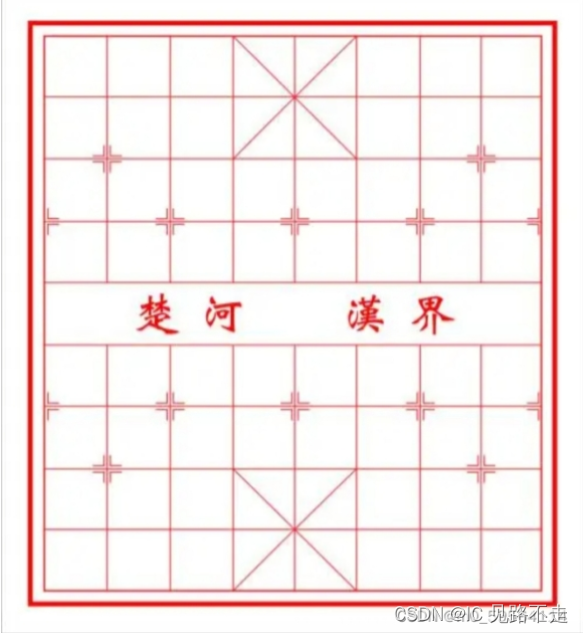
我们把上面安放棋子的二维数组定义成一个地图,也就是map[i][j]的格式,但同时要注意,每一个象棋棋子都有行,列,颜色,是否过河和名称(也就是什么棋子)几种定义区分.
那么这里我们就需要把棋子定义成一个结构.如下:
struct Chesscoordinate//棋子综合信息
{
int x;
int y;
DWORD type; //颜色
bool river;//是否过河
int id;
};当定义了棋子综合信息,我们是不是需要每一个信息都拓展一下?
x代表的是在棋盘上面的列,也就是竖行,y代表的是棋子在棋盘上面的行,也就是横线,而type代表的棋子的颜色,棋子颜色可以分为黑色和红色两种;river设置成bool型的,只需要判断棋子是否过河就可以了.最后id定义的是棋子上面的名称,比如将,帅等.
接下来我们就来VS当中进行棋子的程序定义拓展:
#define distance 35//窗口线与棋盘边界线的距离
#define longth 65//棋盘方格的长
#define high 61//棋盘方格的宽distance longth 和high我们都把其设置成宏,这个就要回溯到棋盘上面,把棋盘假设成一个xy的二维坐标,那么要定义每一个棋子的位置,或者说是每一行与每一列的交叉点,就要用到上面三个宏定义.
比如左上角第一个棋子的坐标可以表示为:
map[0][0].x=distance;
map[0][0].y=distance
而第一行第二个棋子的坐标可以表示为:
map[1][0].x=distance+longth;
map[1][0].y=distance
依次类推......
int xx(int a)//数组下标转换成坐标
{
a = distance + longth * a;
return a;
}
int yy(int a)
{
a = distance + high * a;
return a;
}我们可以推断出每一个棋子的坐标,都可以通过上面几个宏定义以及棋子的实际行列表示出来,
enum pieces
{
SPACE = -1,
車, 馬, 象, 士, 将, 炮, 卒,
车, 马, 相, 仕, 帥, 砲, 兵,
BEGIN, END,
};
enum pieces redchess[] = { 車,馬,象,士,将,炮,卒, };
enum pieces blackchess[] = { 车,马,相,仕,帥,砲,兵, };
enum pieces state = BEGIN;
struct move { //鼠标选中的棋子
int beginx;
int beginy;
int endx;
int endy;
int state;
}moving = { -1,-1,-1,-1,BEGIN };
const char* chessname[] = { "車","馬","象","士","将","炮","卒","车","马","相","仕","帥","砲","兵", };这里我们把棋子的id设置成一个联合结构数组,因为里面的棋子的id都基本不同,同时我们考虑到了棋子要进行运动,把棋子的开始状态设置为BEGIN
而新建一个move的结构,表示鼠标选中棋子的基本信息.begin的行列和结束的行列和运行状态.
最后回到棋子id上面,我们是不是需要把这些id都设置到棋子或者棋盘上面啊,采用常量字符数组的形式,把棋盘上面所有的棋子都表示出来.
而把刚才的map[i][j]二维数组同样定义成一个二维结构数组.如下:
struct Chesscoordinate map[9][10];//坐标
struct Chesscoordinate AImap[9][10];//坐标同时,我们设置了AImap[i][j]的二维结构数组,看看是否下面在进行棋子移动的时候,我们会用到.
这里i=9,j=10是根据我们上面看中国象棋棋盘得到的数据.
2.我们要开始加载图片信息了,把我们已经有的棋盘素材放在同文件下面,然后采用下面程序,就可以在窗口当中显示出中国棋盘的背景图.
void begining()
{
loadimage(&img, "D:/program/Project3-chess successful/1.png");
initgraph(img.getwidth(), img.getheight(), 1); //初始化图形系统
putimage(0, 0, &img);//输出开始界面;
至于,loadimage()和initgraph()函数以及putimage()函数三者的基本理解和解释,建议去搜索,都有比较详细的解释.这里我们解释一下initgraph()函数的基本含义:
这个函数用于初始化绘图环境。
HWND initgraph(
int width,
int height,
int flag = NULL
);参数:
width 绘图环境的宽度。
height 绘图环境的高度。
flag 绘图环境的样式,默认为 NULL。
上面程序的基本思路也就不言而喻:先加载或者找到我们素材的地址,然后定义出素材的宽和长度,然后再输出这个棋盘背景.
当输出完背景之后,我们是不是要先把所有的棋子放在初始位置,也就是初始化棋盘?
void coord()//棋子信息赋值
{
loadimage(&img, "D:/program/Project3-chess successful/1.png");
putimage(0, 0, &img);//输出棋盘
for (int i = 0; i <= 8; i++)
{
for (int j = 0; j <= 9; j++)//遍历二维数组
{
enum pieces chessid = SPACE;//先把全部位置的id赋值为SAPCE
DWORD chesstype;//定义颜色中间变量
if (j <= 4)
{
chesstype = BLACK;//黑方
if (j == 0)
{
if (i <= 4)
{
chessid = blackchess[i];//
}
else
{
chessid = blackchess[8 - i];
}
}
if (j == 2 && (i == 1 || i == 7))
{
chessid = blackchess[5];
}
if (j == 3 && (i == 0 || i == 2 || i == 4 || i == 4 || i == 6 || i == 8))
{
chessid = blackchess[6];
}
}
else
{
chesstype = RED;//红方
if (j == 6 && (i == 0 || i == 2 || i == 4 || i == 6 || i == 8))
{
chessid = redchess[6];
}
if (j == 7 && (i == 1 || i == 7))
{
chessid = redchess[5];
}
if (j == 9)
{
if (i <= 4)
{
chessid = redchess[i];
}
else
{
chessid = redchess[8 - i];
}
}
}//依次赋值
map[i][j].id = chessid;
map[i][j].river = false;
map[i][j].type = chesstype;
map[i][j].x = distance + longth * i;
map[i][j].y = distance + high * j;
}
}
for (int i = 0; i <= 8; i++)
{
for (int j = 0; j <= 9; j++)
{
if (map[i][j].id == SPACE)
{
map[i][j].type = YELLOW;
}
}
}
}看上述程序:
首先先加载出棋盘背景,然后把棋盘上面行和列交叉的位置都设置为SPACE,可以理解为初始化棋盘.然后如果j<=4,也就是楚河的一侧,我们定义棋子type全部都为黑色,而棋子的id要根据行列的位置来确定,首先看第一行,前5列数据,是不是应该是"車,馬,象,士,将"而后四列数据,是不是应该是前面去除将的反序,而观察一下,如果把前面定义成i列,后面对应相等的字符则是8-i列.那么我们就定义完了第一行的数据.
而炮和兵的数据,以及红方的数据是不是同上述思路一样.
然后就开始定义每一个棋子初始化的状态,回溯到棋子的基本信息结构当中,有x,y,river,type和id,我们要依次对其进行定义,
注意在初始状态的时候,棋子的river都为false,因为都没有过楚河
定义完棋子的位置,那么剩下没有棋子的位置,我们是不是要把刚开始初始化的状态都修改为棋盘的背景颜色啊.上述定义完,再次输出棋盘
void qiban()
{
loadimage(&img, "D:/program/Project3-chess successful/1.png");
initgraph(img.getwidth(), img.getheight(), 1);
putimage(0, 0, &img);//输出棋盘
}这个时候就已经初始化了中国象棋的棋盘.
接下来是不是要把每一个棋子都定义到棋盘上面.开始绘画棋子
void getbackground() //画棋子
{
int x_start, y_start;
x_start = distance;
y_start = distance;
settextstyle(30, 0, "黑体");//棋子大小颜色
setbkmode(0);
for (int i = 0; i <= 8; i++)
{
for (int j = 0; j <= 9; j++)
{
if (map[i][j].id != SPACE)//在棋盘上输出
{
setfillcolor(RGB(253, 216, 161));
// setlinestyle(BLACK);
settextcolor(map[i][j].type);
fillcircle(map[i][j].x, map[i][j].y, 24);
fillcircle(map[i][j].x, map[i][j].y, 18);
outtextxy(map[i][j].x - 13, map[i][j].y - 13, chessname[map[i][j].id]);
}
}
}
}如果上面棋盘行列之间的id不是SPACE,那自然就是我们定义的棋子应该安置的位置.从第0行第0列开始,依次进行定义:
画一个棋子,两个圆环,其颜色要画成背景颜色,而棋子上面的文本颜色要根据实际行列定义的type,设置成黑色和红色,
最后便是采用outtextxy()把每一个棋子的字符输入进行.注意此处根据棋盘x和y的地址均减13,是根据实际调试来进行,并不是确定常量.
写到这里,是不是就把棋子和棋盘都初始化好了?yes,of course.
3.棋盘棋子都初始化好了,那么接下来我们是不是就可以开始移动棋盘上面的棋子,进行下棋了?
这里有一个有意思的思考:我刚开始认为吃掉棋子和走到空白的地方是两种不同的情况,后面仔细思考了一下,是同一状态,只需要把原来的修改为结束的就可以了,而原来的只需要位置只需要修改颜色和id为空也就没了,不管他end地址有没有棋子.
void movechess(int a, int b, int c, int d)//移动棋子,改变其坐标
{
map[c][d].id = map[a][b].id;
map[c][d].river = map[a][b].river;
map[c][d].type = map[a][b].type;
map[c][d].x = xx(c);
map[c][d].y = yy(d);
map[a][b].id = SPACE;
map[a][b].type = YELLOW;
}
int xx(int a)//数组下标转换成坐标
{
a = distance + longth * a;
return a;
}
int yy(int a)
{
a = distance + high * a;
return a;
}把[a][b]位置的棋子信息,全部给了[c][d]位置处的棋子,而[a][b]棋子此处的信息要记得修改id和type,id设置为空,而颜色设置成背景颜色.而xx(c),yy(d)就成了棋子移动到下一个点的坐标
void MouseControl()//获取鼠标点击信息并完响应
{
//getbackground();
if (MouseHit())
{
float beginrow, beginrol, endrow, endrol;//第一次按下时的坐标
int intbeginrow, intbeginrol, intendrow, intendrol;//第二次按下时的坐标
MOUSEMSG msg = GetMouseMsg();/*这个函数用于获取一个鼠标消息。如果当前鼠标消息队列中没有,就一直等待。*/
if (msg.uMsg == WM_LBUTTONDOWN)//按下鼠标左键时
{
//获取鼠标点击的数组的下标
// printf("(%d,%d)", msg.x, msg.y);
//回溯转换成行列
beginrow = (float)(msg.x - distance) / longth;
beginrol = (float)(msg.y - distance) / high;
intbeginrow = round(beginrow);
intbeginrol = round(beginrol);
if (moving.state == BEGIN)
{
moving.state = END;
moving.beginx = intbeginrow;
moving.beginy = intbeginrol;
// printf("(%d,%d) \n", moving.beginx, moving.beginy);
}
else if (moving.state == END)
{
moving.state = BEGIN;
moving.endx = intbeginrow;
moving.endy = intbeginrol;
execute(moving.beginx, moving.beginy, moving.endx, moving.endy);
}
}
}
}上面这一段我其实有一点不清晰,我所理解的应该是定义了两个状态,如果状态是开始的时候,那状态改为结束,然后把第一次点击的数据给了开始的数据,如果状态是结束,把状态修改为开始,把第一次点击的数据给了结束的坐标.
关键:
intbeginrow = round(beginrow);
intbeginrol = round(beginrol);判断输赢:
int win()
{
int redgeneral = 0;
int blackgeneral = 0;
for (int i = 0; i <= 8; i++)
{
for (int j = 0; j <= 9; j++)
{
if (map[i][j].id == blackchess[4])
{
blackgeneral++;
}
else if (map[i][j].id == redchess[4])
{
redgeneral++;
}
else
{
blackgeneral = blackgeneral;
redgeneral = redgeneral;
}
}
}
//printf("%d %d\n", blackgeneral, redgeneral);
if (blackgeneral == 0)//红方胜
{
return 0;
}
else if (redgeneral == 0)//黑方胜
{
return 1;
}
else//打平
{
return 2;
}
}给将和帅都定义了初始值,相当于如果将死了,那就是帅赢,相反同理,而如果两者都存在,也就是1+1,那自然就是平手,return 2;
下面就是判断每一种棋子是否按游戏规则进行移动:
bool jiang(int a, int b, int c, int d)//判断是否只移动了一格(将军、兵的规则)
{
float h;
h = sqrt(abs(d - b) * abs(d - b) + abs(c - a) * abs(c - a));
if (b < 4 && c > 2 && c < 6 && d < 3)
{
if (h == 1 && map[c][d].type != map[a][b].type)
return true;
else
return false;
}
if (b > 4 && c > 2 && c < 6 && d >6)
{
if (h == 1 && map[c][d].type != map[a][b].type)
return true;
else
return false;
}
else
{
return false;
}
}
bool bing(int a, int b, int c, int d)
{
float h;
h = sqrt(abs(d - b) * abs(d - b) + abs(c - a) * abs(c - a));
if (map[a][b].type == BLACK)
{
if (map[a][b].river == false)
{
if (d == b + 1 && h == 1 && map[c][d].type != map[a][b].type)
{
return true;
}
else
{
return false;
}
}
else
{
if (d >= b && h == 1 && map[c][d].type != map[a][b].type)
{
return true;
}
else
{
return false;
}
}
}
else if (map[a][b].type == RED)
{
if (map[a][b].river == false)
{
if (d == b - 1 && h == 1 && map[c][d].type != map[a][b].type)
{
return true;
}
else
{
return false;
}
}
else
{
if (d <= b && h == 1 && map[c][d].type != map[a][b].type)
{
return true;
}
else
{
return false;
}
}
}
else
{
return false;
}
}
bool pao(int a, int b, int c, int d)//炮的移动
{
if (c == a && d != b)
{
int time = 0;
int max = d > b ? d : b;
int min = b < d ? b : d;
for (int i = min; i <= max; i++)
{
if (map[c][i].id != SPACE)
{
time++;
}
}
// printf("%d\n", time);
if (map[c][d].id == SPACE)
{
if (time == 1)
return true;
else
return false;
}
if (map[c][d].id != SPACE)
{
if (time != 3)
{
return false;
}
else
{
if (map[c][d].type == map[a][b].type)
{
return false;
}
else
{
return true;
}
}
}
}
else if (d == b && c != a)
{
int time = 0;
int max = a > c ? a : c;
int min = c < a ? c : a;
for (int i = min; i <= max; i++)
{
if (map[i][d].id != SPACE)
{
time++;
}
}
// printf("%d\n", time);
if (map[c][d].id == SPACE)
{
if (time == 1)
return true;
else
return false;
}
if (map[c][d].id != SPACE)
{
if (time != 3)
{
return false;
}
else
{
if (map[c][d].type == map[a][b].type)
{
return false;
}
else
{
return true;
}
}
}
}
else
{
return false;
}
}
bool che(int a, int b, int c, int d)
{
if (c == a && d != b)//是否为直线
{
int time = 0;
int max = d > b ? d : b;
int min = b < d ? b : d;
for (int i = min; i <= max; i++)//遍历路径
{
if (map[c][i].id != SPACE)
{
time++;
}
}
// printf("%d", time);
if (time == 1)//车移动不吃棋子
{
return true;
}
if (time == 2)//车移动并且吃目的坐标的棋子
{
if (map[c][d].type == map[a][b].type)//如果是目的坐标是自己的棋子,则返回false
{
return false;
}
if (map[c][d].type == YELLOW)
{
return false;
}
else
{
return true;
}
}
else
{
return false;
}
}
else if (d == b && c != a)
{
int time = 0;
int max = c > a ? c : a;
int min = a < c ? a : c;
for (int i = min; i <= max; i++)//遍历路径
{
if (map[i][d].id != SPACE)
{
time++;
}
}
// printf("%d", time);
if (time == 1)//车是否车跳棋
{
return true;
}
else if (time == 2)
{
if (map[c][d].type == map[a][b].type)
{
return false;
}
if (map[c][d].type == YELLOW)
{
return false;
}
else
{
return true;
}
}
else
{
return false;
}
}
else
{
return 0;
}
}
bool ma(int a, int b, int c, int d)
{
float h;
h = sqrt(abs(d - b) * abs(d - b) + abs(c - a) * abs(c - a));
// printf("%f", h);
if (h <= 2 || h >= 2.5)//根号8=2.8.根号5=2.2
{
// printf("太远了!\n");
return false;
}
else
{
int xx, yy, max, min;//关键点的坐标和中间值
max = abs(d - b) > abs(c - a) ? abs(d - b) : abs(c - a);
min = abs(c - a) < abs(d - b) ? abs(c - a) : abs(d - b);
//printf("max\min:(%d,%d)", max, min);
if (max == abs(d - b))
{
yy = b + (d - b) / 2;
xx = a;
}
else
{
xx = a + (c - a) / 2;
yy = b;
}
// printf("xx\yy:(%d,%d)\n", xx, yy);
if (map[xx][yy].id == SPACE)
{
if (map[c][d].type != map[a][b].type)
{
// printf("目的坐标(%d,%d)\n", c, d);
// printf("那是你自己的棋子!\n");
return true;
}
else
{
// printf("那是你的棋子!\n");
return false;
}
}
else
{
// printf("关键位置有棋子!\n");
return false;
}
}
}
bool xiang(int a, int b, int c, int d)
{
float h;
h = sqrt(abs(d - b) * abs(d - b) + abs(c - a) * abs(c - a));
if (b <= 4)
{
if (d > 4)
{
return false;
}
else
{
if (h < 2.4 || h>2.9)
{
return false;
}
else
{
int xx = (a + c) / 2;
int yy = (b + d) / 2;
if (map[xx][yy].id == SPACE)
{
if (map[c][d].type == map[a][b].type)
{
return false;
}
else
{
return true;
}
}
else
{
return false;
}
}
}
}
else
{
if (d < 5)
{
return false;
}
else
{
if (h < 2.4 || h>2.9)
{
return false;
}
else
{
int xx = (a + c) / 2;
int yy = (b + d) / 2;
if (map[xx][yy].id == SPACE)
{
if (map[c][d].type == map[a][b].type)
{
return false;
}
else
{
return true;
}
}
else
{
return false;
}
}
}
}
}
bool shi(int a, int b, int c, int d)
{
float h = sqrt(abs(d - b) * abs(d - b) + abs(c - a) * abs(c - a));
// printf("%f", h)
if (b < 5)
{
if (c >= 3 && c <= 5 && d <= 2)
{
if (1.2 < h && h < 1.5)
{
if (map[c][d].type != map[a][b].type)
return true;
else
return false;
}
else
{
return false;
}
}
else
{
return false;
}
}
else if (b > 5)
{
if (c >= 3 && c <= 5 && d >= 7)
{
if (1.2 < h && h < 1.5)
{
if (map[c][d].type != map[a][b].type)
return true;
else
return false;
}
else
{
return false;
}
}
else
{
return false;
}
}
else
return false;
}上述全都是bool型,用以表示判断是否正确就行
接下来是行棋子,如果遵守规则,也就是上面的bool输出true,则移动,否则输出"你不能这样做!"
void execute(int a, int b, int c, int d)//行棋
{
if (map[a][b].id == blackchess[4])//黑方将
{
if (jiang(a, b, c, d))
{
movechess(a, b, c, d);
}
else
{
printf("你不能这样做\n");
}
}
else if (map[a][b].id == redchess[4])//红方将
{
if (jiang(a, b, c, d))
{
movechess(a, b, c, d);
}
else
{
printf("你不能这样做!\n");
}
}
else if (map[a][b].id == blackchess[6])//黑方兵
{
if (map[a][b].river == false)
{
if (bing(a, b, c, d))
{
movechess(a, b, c, d);
if (d > 4)
{
map[c][d].river = true;
}
}
else
{
printf("你不可以这样做!\n");
}
}
else
{
if (bing(a, b, c, d) && d >= b)
{
movechess(a, b, c, d);
}
else
{
printf("你不可以这样做\n");
}
}
}
else if (map[a][b].id == redchess[6])//红方兵
{
if (map[a][b].river == false)
{
if (bing(a, b, c, d))
{
movechess(a, b, c, d);
if (d < 5)
{
map[c][d].river = true;
}
}
else
{
printf("你不可以这样做!\n");
}
}
else
{
if (bing(a, b, c, d) && d <= b)
{
movechess(a, b, c, d);
}
else
{
printf("你不可以这样做!\n");
}
}
}
else if (map[a][b].id == blackchess[5] || map[a][b].id == redchess[5])
{
if (pao(a, b, c, d))
{
movechess(a, b, c, d);
}
else
{
printf("你不能这样做!\n");
}
}
else if (map[a][b].id == blackchess[0] || map[a][b].id == redchess[0])
{
if (che(a, b, c, d))
{
movechess(a, b, c, d);
}
else
{
printf("你不可以这样做!\n");
}
}
else if (map[a][b].id == blackchess[1] || map[a][b].id == redchess[1])
{
if (ma(a, b, c, d))
{
movechess(a, b, c, d);
}
else
{
printf("你不能这样做!\n");
}
}
else if (map[a][b].id == blackchess[2] || map[a][b].id == redchess[2])
{
if (xiang(a, b, c, d))
{
movechess(a, b, c, d);
}
else
printf("你不能这样做!\n");
}
else if (map[a][b].id == blackchess[3])
{
if (shi(a, b, c, d))
{
movechess(a, b, c, d);
}
else
printf("你不能这样做!");
}
else if (map[a][b].id == redchess[3])
{
if (shi(a, b, c, d))
{
movechess(a, b, c, d);
}
else
printf("你不能这样做!");
}
}定义完上面所有的函数,最后就是主函数,运行就可以了
int main()
{
begining();
while (1)//当正确的时候
{
coord();//输出棋盘
win();
BeginBatchDraw();
/*这个函数用于开始批量绘图。执行后
任何绘图操作都将暂时不输出到绘图窗口上,直到执行 FlushBatchDraw 或 EndBatchDraw 才将之前的绘图输出。*/
//运行BeginBatchDraw后,所有的绘图都不再显示在屏幕上,而是在内存中进行
//封装的双缓存,避免闪屏
/*那如果我们能让打印的过程不显示出来,只显示打印完后的显示缓冲区不就行了吗*/
while (win() == 2)//平局状态,是不是还需要继续运行下去?
{
win();
putimage(0, 0, &img);
getbackground();//输出棋子
MouseControl();//鼠标更改数据
FlushBatchDraw();/*这个函数用于执行未完成的绘制任务。*/
}
putimage(0, 0, &img);
getbackground();//输出棋子
MouseControl();//鼠标更改数据
FlushBatchDraw();/*这个函数用于执行未完成的绘制任务。*/
if (win() == 0)
{
printf("红方胜!\n");
}
else if (win() == 1)
{
printf("黑方胜!\n");
}
}
getchar();
return 0;
}总代码:
#include<stdio.h>
#include<graphics.h>
#include<math.h>
void execute(int a, int b, int c, int d);
bool jiang(int a, int b, int c, int d);
bool pao(int a, int b, int c, int d);
bool ma(int a, int b, int c, int d);
IMAGE img;
#define distance 35//窗口线与棋盘边界线的距离
#define longth 65//棋盘方格的长
#define high 61//棋盘方格的宽
struct movecoordinate
{
long x;
long y;
};
struct Chesscoordinate//棋子综合信息
{
int x;
int y;
DWORD type; //颜色
bool river;//是否过河
int id;
};
enum pieces
{
SPACE = -1,
車, 馬, 象, 士, 将, 炮, 卒,
车, 马, 相, 仕, 帥, 砲, 兵,
BEGIN, END,
};
enum pieces redchess[] = { 車,馬,象,士,将,炮,卒, };
enum pieces blackchess[] = { 车,马,相,仕,帥,砲,兵, };
enum pieces state = BEGIN;
struct move { //鼠标选中的棋子
int beginx;
int beginy;
int endx;
int endy;
int state;
}moving = { -1,-1,-1,-1,BEGIN };
const char* chessname[] = { "車","馬","象","士","将","炮","卒","车","马","相","仕","帥","砲","兵", };
struct Chesscoordinate map[9][10];//坐标
struct Chesscoordinate AImap[9][10];//坐标
movecoordinate begin = { -1,-1 }, end = { -1,-1 };
int xx(int a)//数组下标转换成坐标
{
a = distance + longth * a;
return a;
}
int yy(int a)
{
a = distance + high * a;
return a;
}
void begining()
{
loadimage(&img, "D:/program/Project3-chess successful/1.png");
initgraph(img.getwidth(), img.getheight(), 1); //初始化图形系统
putimage(0, 0, &img);//输出开始界面;
}
void qiban()
{
loadimage(&img, "D:/program/Project3-chess successful/1.png");
initgraph(img.getwidth(), img.getheight(), 1);
putimage(0, 0, &img);//输出棋盘
}
void coord()//棋子信息赋值
{
loadimage(&img, "D:/program/Project3-chess successful/1.png");
putimage(0, 0, &img);//输出棋盘
for (int i = 0; i <= 8; i++)
{
for (int j = 0; j <= 9; j++)//遍历二维数组
{
enum pieces chessid = SPACE;//先把全部位置的id赋值为SAPCE
DWORD chesstype;//定义颜色中间变量
if (j <= 4)
{
chesstype = BLACK;//黑方
if (j == 0)
{
if (i <= 4)
{
chessid = blackchess[i];//
}
else
{
chessid = blackchess[8 - i];
}
}
if (j == 2 && (i == 1 || i == 7))
{
chessid = blackchess[5];
}
if (j == 3 && (i == 0 || i == 2 || i == 4 || i == 4 || i == 6 || i == 8))
{
chessid = blackchess[6];
}
}
else
{
chesstype = RED;//红方
if (j == 6 && (i == 0 || i == 2 || i == 4 || i == 6 || i == 8))
{
chessid = redchess[6];
}
if (j == 7 && (i == 1 || i == 7))
{
chessid = redchess[5];
}
if (j == 9)
{
if (i <= 4)
{
chessid = redchess[i];
}
else
{
chessid = redchess[8 - i];
}
}
}//依次赋值
map[i][j].id = chessid;
map[i][j].river = false;
map[i][j].type = chesstype;
map[i][j].x = distance + longth * i;
map[i][j].y = distance + high * j;
}
}
for (int i = 0; i <= 8; i++)
{
for (int j = 0; j <= 9; j++)
{
if (map[i][j].id == SPACE)
{
map[i][j].type = YELLOW;
}
}
}
}
void getbackground() //画棋子
{
int x_start, y_start;
x_start = distance;
y_start = distance;
settextstyle(30, 0, "黑体");//棋子大小颜色
setbkmode(0);
for (int i = 0; i <= 8; i++)
{
for (int j = 0; j <= 9; j++)
{
if (map[i][j].id != SPACE)//在棋盘上输出
{
setfillcolor(RGB(253, 216, 161));
// setlinestyle(BLACK);
settextcolor(map[i][j].type);
fillcircle(map[i][j].x, map[i][j].y, 24);
fillcircle(map[i][j].x, map[i][j].y, 18);
outtextxy(map[i][j].x - 13, map[i][j].y - 13, chessname[map[i][j].id]);
}
}
}
}
void movechess(int a, int b, int c, int d)//移动棋子,改变其坐标
{
map[c][d].id = map[a][b].id;
map[c][d].river = map[a][b].river;
map[c][d].type = map[a][b].type;
map[c][d].x = xx(c);
map[c][d].y = yy(d);
map[a][b].id = SPACE;
map[a][b].type = YELLOW;
}
void MouseControl()//获取鼠标点击信息并完响应
{
//getbackground();
if (MouseHit())
{
float beginrow, beginrol, endrow, endrol;//第一次按下时的坐标
int intbeginrow, intbeginrol, intendrow, intendrol;//第二次按下时的坐标
MOUSEMSG msg = GetMouseMsg();/*这个函数用于获取一个鼠标消息。如果当前鼠标消息队列中没有,就一直等待。*/
if (msg.uMsg == WM_LBUTTONDOWN)//按下鼠标左键时
{
//获取鼠标点击的数组的下标
// printf("(%d,%d)", msg.x, msg.y);
//回溯转换成行列
beginrow = (float)(msg.x - distance) / longth;
beginrol = (float)(msg.y - distance) / high;
intbeginrow = round(beginrow);
intbeginrol = round(beginrol);
if (moving.state == BEGIN)
{
moving.state = END;
moving.beginx = intbeginrow;
moving.beginy = intbeginrol;
// printf("(%d,%d) \n", moving.beginx, moving.beginy);
}
else if (moving.state == END)
{
moving.state = BEGIN;
moving.endx = intbeginrow;
moving.endy = intbeginrol;
execute(moving.beginx, moving.beginy, moving.endx, moving.endy);
}
}
}
}
int win()
{
int redgeneral = 0;
int blackgeneral = 0;
for (int i = 0; i <= 8; i++)
{
for (int j = 0; j <= 9; j++)
{
if (map[i][j].id == blackchess[4])
{
blackgeneral++;
}
else if (map[i][j].id == redchess[4])
{
redgeneral++;
}
else
{
blackgeneral = blackgeneral;
redgeneral = redgeneral;
}
}
}
//printf("%d %d\n", blackgeneral, redgeneral);
if (blackgeneral == 0)//红方胜
{
return 0;
}
else if (redgeneral == 0)//黑方胜
{
return 1;
}
else//打平
{
return 2;
}
}
bool jiang(int a, int b, int c, int d)//判断是否只移动了一格(将军、兵的规则)
{
float h;
h = sqrt(abs(d - b) * abs(d - b) + abs(c - a) * abs(c - a));
if (b < 4 && c > 2 && c < 6 && d < 3)
{
if (h == 1 && map[c][d].type != map[a][b].type)
return true;
else
return false;
}
if (b > 4 && c > 2 && c < 6 && d >6)
{
if (h == 1 && map[c][d].type != map[a][b].type)
return true;
else
return false;
}
else
{
return false;
}
}
bool bing(int a, int b, int c, int d)
{
float h;
h = sqrt(abs(d - b) * abs(d - b) + abs(c - a) * abs(c - a));
if (map[a][b].type == BLACK)
{
if (map[a][b].river == false)
{
if (d == b + 1 && h == 1 && map[c][d].type != map[a][b].type)
{
return true;
}
else
{
return false;
}
}
else
{
if (d >= b && h == 1 && map[c][d].type != map[a][b].type)
{
return true;
}
else
{
return false;
}
}
}
else if (map[a][b].type == RED)
{
if (map[a][b].river == false)
{
if (d == b - 1 && h == 1 && map[c][d].type != map[a][b].type)
{
return true;
}
else
{
return false;
}
}
else
{
if (d <= b && h == 1 && map[c][d].type != map[a][b].type)
{
return true;
}
else
{
return false;
}
}
}
else
{
return false;
}
}
bool pao(int a, int b, int c, int d)//炮的移动
{
if (c == a && d != b)
{
int time = 0;
int max = d > b ? d : b;
int min = b < d ? b : d;
for (int i = min; i <= max; i++)
{
if (map[c][i].id != SPACE)
{
time++;
}
}
// printf("%d\n", time);
if (map[c][d].id == SPACE)
{
if (time == 1)
return true;
else
return false;
}
if (map[c][d].id != SPACE)
{
if (time != 3)
{
return false;
}
else
{
if (map[c][d].type == map[a][b].type)
{
return false;
}
else
{
return true;
}
}
}
}
else if (d == b && c != a)
{
int time = 0;
int max = a > c ? a : c;
int min = c < a ? c : a;
for (int i = min; i <= max; i++)
{
if (map[i][d].id != SPACE)
{
time++;
}
}
// printf("%d\n", time);
if (map[c][d].id == SPACE)
{
if (time == 1)
return true;
else
return false;
}
if (map[c][d].id != SPACE)
{
if (time != 3)
{
return false;
}
else
{
if (map[c][d].type == map[a][b].type)
{
return false;
}
else
{
return true;
}
}
}
}
else
{
return false;
}
}
bool che(int a, int b, int c, int d)
{
if (c == a && d != b)//是否为直线
{
int time = 0;
int max = d > b ? d : b;
int min = b < d ? b : d;
for (int i = min; i <= max; i++)//遍历路径
{
if (map[c][i].id != SPACE)
{
time++;
}
}
// printf("%d", time);
if (time == 1)//车移动不吃棋子
{
return true;
}
if (time == 2)//车移动并且吃目的坐标的棋子
{
if (map[c][d].type == map[a][b].type)//如果是目的坐标是自己的棋子,则返回false
{
return false;
}
if (map[c][d].type == YELLOW)
{
return false;
}
else
{
return true;
}
}
else
{
return false;
}
}
else if (d == b && c != a)
{
int time = 0;
int max = c > a ? c : a;
int min = a < c ? a : c;
for (int i = min; i <= max; i++)//遍历路径
{
if (map[i][d].id != SPACE)
{
time++;
}
}
// printf("%d", time);
if (time == 1)//车是否车跳棋
{
return true;
}
else if (time == 2)
{
if (map[c][d].type == map[a][b].type)
{
return false;
}
if (map[c][d].type == YELLOW)
{
return false;
}
else
{
return true;
}
}
else
{
return false;
}
}
else
{
return 0;
}
}
bool ma(int a, int b, int c, int d)
{
float h;
h = sqrt(abs(d - b) * abs(d - b) + abs(c - a) * abs(c - a));
// printf("%f", h);
if (h <= 2 || h >= 2.5)//根号8=2.8.根号5=2.2
{
// printf("太远了!\n");
return false;
}
else
{
int xx, yy, max, min;//关键点的坐标和中间值
max = abs(d - b) > abs(c - a) ? abs(d - b) : abs(c - a);
min = abs(c - a) < abs(d - b) ? abs(c - a) : abs(d - b);
//printf("max\min:(%d,%d)", max, min);
if (max == abs(d - b))
{
yy = b + (d - b) / 2;
xx = a;
}
else
{
xx = a + (c - a) / 2;
yy = b;
}
// printf("xx\yy:(%d,%d)\n", xx, yy);
if (map[xx][yy].id == SPACE)
{
if (map[c][d].type != map[a][b].type)
{
// printf("目的坐标(%d,%d)\n", c, d);
// printf("那是你自己的棋子!\n");
return true;
}
else
{
// printf("那是你的棋子!\n");
return false;
}
}
else
{
// printf("关键位置有棋子!\n");
return false;
}
}
}
bool xiang(int a, int b, int c, int d)
{
float h;
h = sqrt(abs(d - b) * abs(d - b) + abs(c - a) * abs(c - a));
if (b <= 4)
{
if (d > 4)
{
return false;
}
else
{
if (h < 2.4 || h>2.9)
{
return false;
}
else
{
int xx = (a + c) / 2;
int yy = (b + d) / 2;
if (map[xx][yy].id == SPACE)
{
if (map[c][d].type == map[a][b].type)
{
return false;
}
else
{
return true;
}
}
else
{
return false;
}
}
}
}
else
{
if (d < 5)
{
return false;
}
else
{
if (h < 2.4 || h>2.9)
{
return false;
}
else
{
int xx = (a + c) / 2;
int yy = (b + d) / 2;
if (map[xx][yy].id == SPACE)
{
if (map[c][d].type == map[a][b].type)
{
return false;
}
else
{
return true;
}
}
else
{
return false;
}
}
}
}
}
bool shi(int a, int b, int c, int d)
{
float h = sqrt(abs(d - b) * abs(d - b) + abs(c - a) * abs(c - a));
// printf("%f", h)
if (b < 5)
{
if (c >= 3 && c <= 5 && d <= 2)
{
if (1.2 < h && h < 1.5)
{
if (map[c][d].type != map[a][b].type)
return true;
else
return false;
}
else
{
return false;
}
}
else
{
return false;
}
}
else if (b > 5)
{
if (c >= 3 && c <= 5 && d >= 7)
{
if (1.2 < h && h < 1.5)
{
if (map[c][d].type != map[a][b].type)
return true;
else
return false;
}
else
{
return false;
}
}
else
{
return false;
}
}
else
return false;
}
void execute(int a, int b, int c, int d)//行棋
{
if (map[a][b].id == blackchess[4])//黑方将
{
if (jiang(a, b, c, d))
{
movechess(a, b, c, d);
}
else
{
printf("你不能这样做\n");
}
}
else if (map[a][b].id == redchess[4])//红方将
{
if (jiang(a, b, c, d))
{
movechess(a, b, c, d);
}
else
{
printf("你不能这样做!\n");
}
}
else if (map[a][b].id == blackchess[6])//黑方兵
{
if (map[a][b].river == false)
{
if (bing(a, b, c, d))
{
movechess(a, b, c, d);
if (d > 4)
{
map[c][d].river = true;
}
}
else
{
printf("你不可以这样做!\n");
}
}
else
{
if (bing(a, b, c, d) && d >= b)
{
movechess(a, b, c, d);
}
else
{
printf("你不可以这样做\n");
}
}
}
else if (map[a][b].id == redchess[6])//红方兵
{
if (map[a][b].river == false)
{
if (bing(a, b, c, d))
{
movechess(a, b, c, d);
if (d < 5)
{
map[c][d].river = true;
}
}
else
{
printf("你不可以这样做!\n");
}
}
else
{
if (bing(a, b, c, d) && d <= b)
{
movechess(a, b, c, d);
}
else
{
printf("你不可以这样做!\n");
}
}
}
else if (map[a][b].id == blackchess[5] || map[a][b].id == redchess[5])
{
if (pao(a, b, c, d))
{
movechess(a, b, c, d);
}
else
{
printf("你不能这样做!\n");
}
}
else if (map[a][b].id == blackchess[0] || map[a][b].id == redchess[0])
{
if (che(a, b, c, d))
{
movechess(a, b, c, d);
}
else
{
printf("你不可以这样做!\n");
}
}
else if (map[a][b].id == blackchess[1] || map[a][b].id == redchess[1])
{
if (ma(a, b, c, d))
{
movechess(a, b, c, d);
}
else
{
printf("你不能这样做!\n");
}
}
else if (map[a][b].id == blackchess[2] || map[a][b].id == redchess[2])
{
if (xiang(a, b, c, d))
{
movechess(a, b, c, d);
}
else
printf("你不能这样做!\n");
}
else if (map[a][b].id == blackchess[3])
{
if (shi(a, b, c, d))
{
movechess(a, b, c, d);
}
else
printf("你不能这样做!");
}
else if (map[a][b].id == redchess[3])
{
if (shi(a, b, c, d))
{
movechess(a, b, c, d);
}
else
printf("你不能这样做!");
}
}
int main()
{
begining();
while (1)//当正确的时候
{
coord();//输出棋盘
win();
BeginBatchDraw();
/*这个函数用于开始批量绘图。执行后
任何绘图操作都将暂时不输出到绘图窗口上,直到执行 FlushBatchDraw 或 EndBatchDraw 才将之前的绘图输出。*/
//运行BeginBatchDraw后,所有的绘图都不再显示在屏幕上,而是在内存中进行
//封装的双缓存,避免闪屏
/*那如果我们能让打印的过程不显示出来,只显示打印完后的显示缓冲区不就行了吗*/
while (win() == 2)//平局状态,是不是还需要继续运行下去?
{
win();
putimage(0, 0, &img);
getbackground();//输出棋子
MouseControl();//鼠标更改数据
FlushBatchDraw();/*这个函数用于执行未完成的绘制任务。*/
}
putimage(0, 0, &img);
getbackground();//输出棋子
MouseControl();//鼠标更改数据
FlushBatchDraw();/*这个函数用于执行未完成的绘制任务。*/
if (win() == 0)
{
printf("红方胜!\n");
}
else if (win() == 1)
{
printf("黑方胜!\n");
}
}
getchar();
return 0;
}总代码参考于:
(1条消息) 基于c语言的象棋游戏_m0_59564114的博客-CSDN博客_c语言象棋游戏代码
